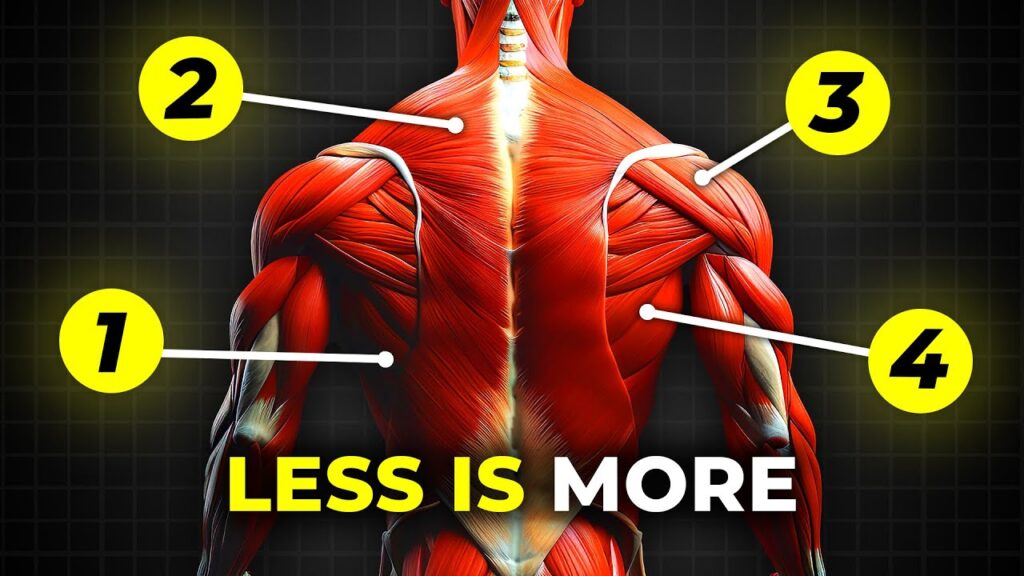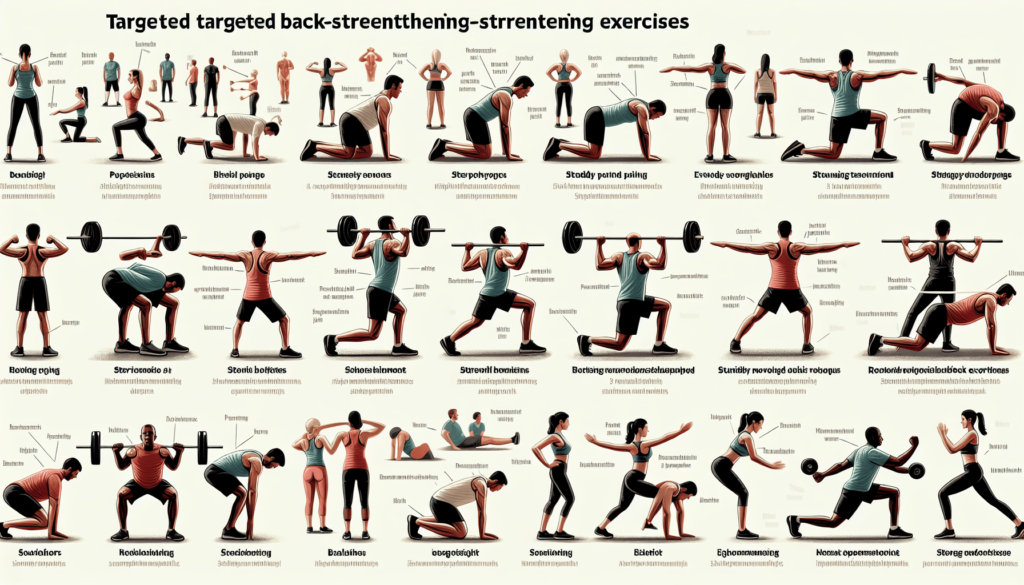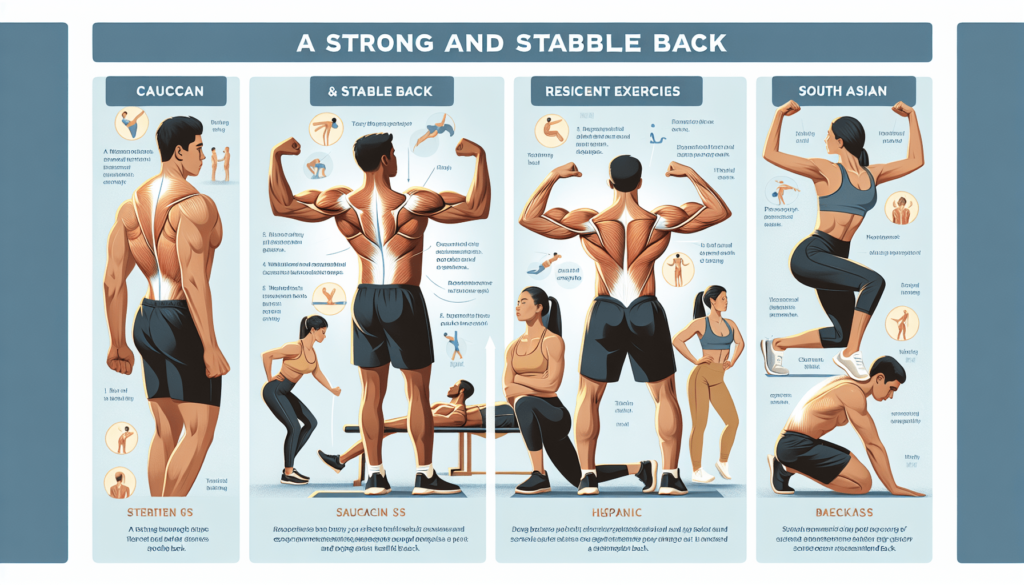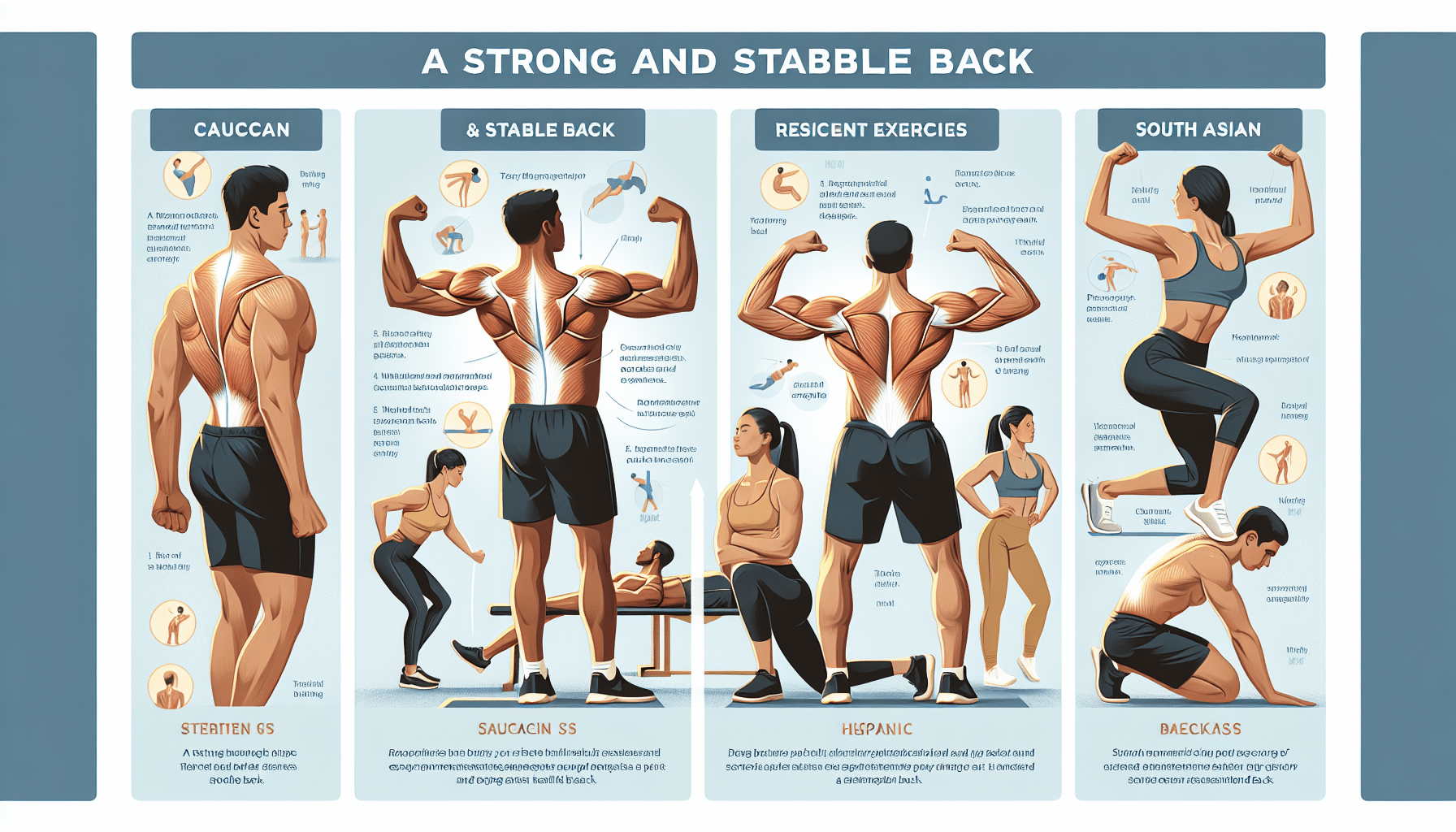Are you ready to build a stronger, wider back? Today, we’re focusing on just 5 powerful moves that will help you build serious back strength and size. Whether you’re a beginner or a seasoned gym rat, this video has something for you. Forget endless isolation exercises – we’re focusing on functional movements that deliver maximum results in less time. In this article, we’ll cover the importance of building a strong back for overall strength and stability. We’ll delve into the top 5 exercises that target different areas of the back, including bent over rows, pull-ups and chin-ups, barbell shrugs, single arm dumbbell rows, and barbell deadlifts. Each exercise will be dissected to ensure you know how to perform them correctly and understand why they are essential for sculpting a formidable back.
To effectively train your back, it’s crucial to focus on form, progressive overload, varying grip, incorporating isolation exercises, listening to your body, planning balanced workouts, warming up adequately, and staying consistent. By implementing these tips and performing the 5 powerful exercises highlighted in this article, you’ll be well on your way to building a stronger and wider back that not only enhances your physique but also improves your overall strength and stability. So, get ready to roll up your sleeves and start building that back to remember!
Benefits of a Strong Back
A strong back offers numerous benefits that go beyond just aesthetics. By focusing on back strength and incorporating specific exercises into your routine, you can experience increased overall strength, improved stability and posture, reduced risk of injury, enhanced performance in other exercises or activities, and improved appearance and body aesthetics.
Increased overall strength
Having a strong back is crucial for overall strength and functionality. Your back muscles play a significant role in supporting your upper body and facilitating movement. By strengthening your back, you can improve your ability to handle heavier loads, whether it’s lifting weights at the gym or performing everyday tasks like carrying groceries or moving furniture.
Improved stability and posture
A strong back is essential for maintaining good posture and stability. Weak back muscles can contribute to poor posture, leading to issues such as rounded shoulders or an excessive curve in the spine. By strengthening your back muscles, you can improve your posture, which not only has aesthetic benefits but also helps prevent muscular imbalances and reduces the risk of developing chronic back pain.
Reduced risk of injury
One of the most significant benefits of a strong back is the reduced risk of injury. Many common injuries, such as strains or sprains, occur due to weak muscles and imbalances in the body. Strengthening your back muscles can help prevent these injuries by providing support and stability to your spine and surrounding structures. Additionally, a strong back can help protect against more severe injuries, such as herniated discs or vertebral fractures.
Enhanced performance in other exercises or activities
Building a strong back can also enhance your performance in other exercises or activities. Many compound movements, such as squats or deadlifts, rely on a strong back for proper form and execution. By improving your back strength, you can increase your power and stability during these exercises, leading to better overall performance. Additionally, having a strong back can improve your performance in activities like sports, where back strength is often essential for agility and power.
Improved appearance and body aesthetics
While the functional benefits of a strong back are undoubtedly important, there’s no denying the aesthetic appeal of a well-developed back. A strong and defined back can create the illusion of a smaller waist and a more balanced physique. Whether you’re aiming for a V-shaped back or simply want to improve your overall body aesthetics, focusing on back exercises can help you achieve your desired look.

Exercises for a Strong Back
To build a strong back, incorporating specific exercises into your routine is key. The following exercises target different areas of the back and can help you develop strength and size.
Bent Over Rows
Bent over rows are a heavyweight champion for mass building in the upper body. This compound movement effectively targets the entire upper back, stimulating muscle growth and promoting a balanced physique. To perform bent over rows, stand with your feet shoulder-width apart, hinge at the hips, and grip the barbell or dumbbells with palms facing you. Keep your back straight and lift the weight towards your chest, focusing on keeping your elbows close to your body. Bent over rows engage the lats, rhomboids, and traps, promoting upper back width and thickness.
Pull-Ups and Chin-Ups
Pull-ups and chin-ups are bodyweight exercises that target different areas of the back. Pull-ups focus on the upper back and lats, while chin-ups target the biceps and lower back. These exercises can significantly contribute to building a powerful back. To perform pull-ups or chin-ups, grip the overhead bar with palms facing away for pull-ups or towards you for chin-ups. Lift your body and go through a full range of motion, engaging your lats and upper back. By incorporating pull-ups and chin-ups into your routine, you can enhance your pulling strength and develop a well-defined back.
Barbell Shrugs
Barbell shrugs are key exercises for developing the trapezius muscles, which contribute to upper back thickness. To perform barbell shrugs, stand with your feet shoulder-width apart, holding a weighted barbell in front of you. Elevate your shoulders as high as possible while keeping your arms straight. This isolated movement targets the trapezius muscles and enhances the prominence of the upper back. Barbell shrugs not only improve the aesthetics of your back but also strengthen the muscles responsible for shoulder elevation and stabilization.
Single Arm Dumbbell Rows
Single arm dumbbell rows promote symmetry in the back muscles and target the major muscle groups of the back. To perform this exercise, kneel on a bench with one knee and hand for support, and hold a dumbbell in the opposite hand. Pull the dumbbell towards your hip, keeping your elbow close to your body. This unilateral movement engages the lats, rhomboids, and traps, providing a full range of motion and addressing any muscle imbalances. By incorporating single arm dumbbell rows into your routine, you can contribute to a well-balanced and proportionate back.
Barbell Deadlifts
Barbell deadlifts are compound movements that target multiple back muscles and engage the entire posterior chain. To perform barbell deadlifts, stand with your feet shoulder-width apart, grasp the barbell with hands just outside your knees, and lift with a hip hinge motion. Keep your back straight throughout the lift. Barbell deadlifts primarily involve the lower back but also activate the erector spinae, lats, and traps. This exercise promotes overall back development and enhances core strength. Start with light weights and gradually increase to challenge your muscles.

Tips for Effective and Safe Back Training
To ensure your back training is effective and safe, consider the following tips:
-
Focus on proper form and technique: Always prioritize proper form and technique during your exercises. This will not only maximize the benefits of each repetition but also minimize the risk of injuries.
-
Practice progressive overload: Gradually increase the resistance or difficulty of your exercises over time to challenge your muscles and promote continuous growth and strength development.
-
Vary your grip: Experiment with different grips, such as overhand, underhand, or neutral grips, to target different areas of the back. Varying your grip prevents monotony and ensures comprehensive muscle engagement.
-
Incorporate isolation exercises: While compound movements form the foundation of back training, don’t overlook isolation exercises. Incorporate movements like face pulls or lat pulldowns to specifically target smaller muscle groups and enhance overall back development.
-
Listen to your body: Pay attention to any signals of fatigue, discomfort, or strain during your workouts. Adequate rest and recovery are crucial for muscle growth, so if something doesn’t feel right, it’s okay to adjust or modify the exercise to suit your individual needs.
-
Plan balanced workouts: Design well-rounded workouts that address all aspects of back development. Balance vertical and horizontal pulls, as well as compound and isolation exercises, to ensure comprehensive stimulation of the back muscles.
-
Always warm up adequately: Before engaging in back training, it’s essential to warm up adequately to prepare your muscles and joints for the upcoming workout. Perform dynamic stretches and light cardio exercises to increase blood flow and mobility.
-
Stay consistent: Building a strong back takes time and consistency. Make back training a regular part of your routine to see long-term results. Stay committed and patient, and you’ll achieve your goals.

Conclusion
Building a stronger and wider back is essential for overall strength, stability, and functionality. By focusing on back exercises and incorporating them into your routine, you can experience increased overall strength, improved stability and posture, reduced risk of injury, enhanced performance in other exercises or activities, and improved appearance and body aesthetics. Follow the recommended exercises and training tips, tailor your workouts to your fitness level and goals, and stay committed and patient to see long-term results. Your back will thank you for it!
